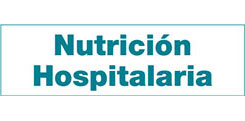Trabajo Original
Stunting, wasting, and mid upper arm circumference status among children admitted to nemazee teaching hospital
Seyed Mohsen Dehghani, Hazhir Javaherizadeh, Masoomeh Heidary, Naser Honar, Maryam Ataollahi, Homa Ilkanipour, Hossein Moravej
 Número de descargas:
7365
Número de descargas:
7365
 Número de visitas:
9170
Número de visitas:
9170
 Citas:
2
Citas:
2
Compártelo:
Introduction and aim: The aim of this study was to evaluate nutritional status in children without prior hospital admission or evidence of chronic disease.Subjects and methods: The current study is a cross-sectional and observational study which was conducted for assessing the nutritional status of children. In this study, consecutive sampling was used, with a sample size about 400 children aged 6 months to 18 years at first hospital admission. All subjects were hospitalized consecutively in the Pediatric Emergency Department of the Nemazee Teaching Hospital of Shiraz University of Medical Sciences (Shiraz, Islamic Republic of Iran). All children with evidence or history of chronic diseases such as liver cirrhosis, microcephaly, macrocephaly due to congenital infection or abnormal skull shape, patients with muscular or neurological problem, with prolonged steroid usage, nephrotic syndrome, cardiac problem, and protein loosing enteropathy were excluded from the study. The duration of the study was six months, starting from January 2016.Results: In the current study, 430 (225 boys and 175 girls) cases were included. Mean age was 5.39 (SEM 0.23) for boys and 5.78 (SEM 0.38) for girls. According to H/A criteria (current height/ideal height), 194 (48.5%) patients were stunted, 75 (18.8%) were mild, 49 (12.3%) were moderate and 70 (17.5%) were severe. According to W/A data (current weight/ideal weight), 188 (47%) of the patients studied were malnourished. Of these cases, 118 (29.5%) had mild malnutrition; 54 (13.5%), moderate; and 16 (4%), severe. According to body mass index (BMI), 40 (10%) patients were overweight, four (16%) were obese, and four (1%) were severe obese. In relation to middle upper arm circumference (MUAC), 56 (14%) patients were malnourished, 33 (8.3%) were at risk, 14 (3.5%) presented moderate malnutrition, and 9 (2.3%), severe malnutrition.Conclusion: Prevalence of malnutrition among children without prior admission was 48.5% (according to H/A). According to W/A, 47% of children had different degrees of malnutrition.
Palabras Clave:
Artículos más populares
Artículo Especial: VII Lección Jesús Culebras. Respuesta inflamatoria sistémica y disfunción/ fracaso multiorgánico tras una agresión: implicaciones metabólicas
Ante cualquier agresión, el organismo pone en marc...
Artículo Especial: VIII Lección Jesús Culebras. Medicina intensiva, nutrición e hiperglucemia: una relación muy estrecha
El paciente crítico presenta una respuesta metaból...
-
Licencia creative commons: Open Access bajo la licencia Creative Commons 4.0 CC BY-NC-SA
https://creativecommons.org/licenses/by-nc-sa/4.0/legalcode




